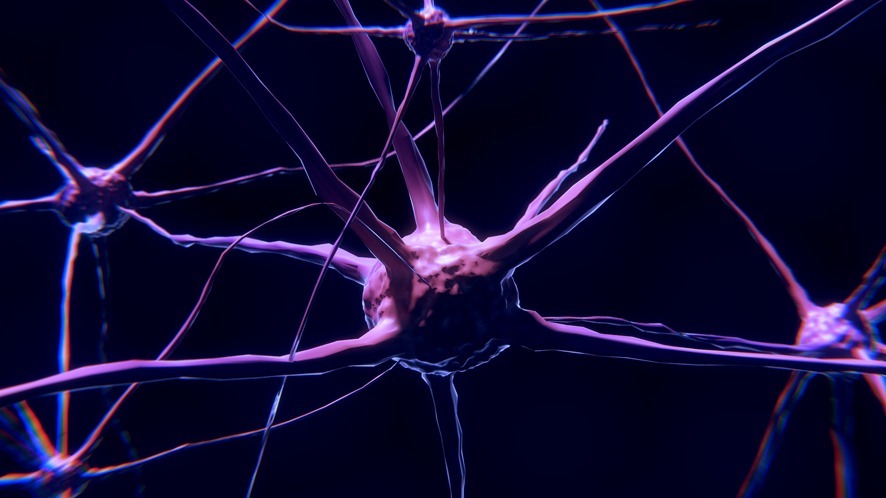Overview
Article Series | Core conflicts of toxic relationships
This article here is not a quick read-through but still defiantly a simplification. Bare in mind that a concept or term can never capture all individual facets of a person. It shouldn´t be used to accuse someone, even if you have been wronged (mind your karma ;-). So – if I´m using the term “narcissist” or even “narcisstic person” – I mean an aspect or facet of that person. There are many other facets within each one of us. Let´s keep that in mind.
This article encompasses a lot and I dearly hope, you can feel understood & seen just by reading those lines. Yet this is only the entry to the rabbit hole. The underlying mechanisms fan out to more complex structure below the surface.
If you want to dive deeper, you can start here with the first post of the article series about common core conflicts in toxic relationships:
If you´re interested in the origins of such a dynamic, explore the initial imprint both partners carry. Since this contributes to turmoil and confusion in such a dynamic, it´s indeed helpful to understand the narcisstic wound and the empathic wound.
Introduction to Empath-Narcissist Dynamics
In the complex world of relationships, few are as challenging and misunderstood as the dynamic between empaths and narcissists. Empaths, known for their deep emotional sensitivity and compassion, often find themselves entangled with so called narcissists, individuals characterized by a fragile sense of self-worth and a relentless need for admiration. This relationship can initially feel like a perfect match, but over time, it reveals its toxic underpinnings.
This article is part of a broader series on Narcissism and Co-Narcissism, exploring the intricacies of these dynamics. It’s important to note that while this overview offers insight, each individual relationship can differ in nuance. If you’re looking for more detailed information on these topics, you can explore additional articles from this series, which delve deeper into the magnetic pull between empaths and narcissists.
What is Narcissism?
Narcissism is rooted in the myth of Narcissus, a character from Ovid’s poetry, and has been adapted into psychological terminology. It describes individuals who are primarily focused on self-esteem preservation and have difficulty forming healthy social relationships. Narcissism can manifest on a spectrum – from milder personality traits to full-blown personality disorders.
It’s crucial to avoid labeling or diagnosing someone based solely on behavior patterns, as only trained professionals can accurately identify narcissistic personality disorders.
A narcissistic individual is often consumed by self-preservation, which can involve manipulating or devaluing others to maintain their fragile ego. They struggle with empathy, and often retreat from situations requiring emotional intimacy or vulnerability. In relationships, narcissists often need external validation to compensate for deep-seated feelings of inadequacy.
The narcissistic wound
The core of narcissism grew from a narcissistic wound – a deep emotional injury, often stemming from childhood, that shapes their behavior and emotional responses. This wound causes them to avoid emotional closeness, protect their self-image, maintain control and distance in relationships. You can read more about the narcissistic wound in this dedicated article.
What is an empath?
An empath is a highly sensitive person, deeply in tune with the emotions and energies of others. While empathy is often seen as a strength, it can also be a vulnerability when empaths neglect their own needs. Empaths frequently find themselves in relationships where they give way more than they receive. Continuously driven by a desire to heal or help their partner. To dive deeper into the traits of empaths, explore my article 10 Points on Empaths | Traits, Challenges & 10 Self-Care Strategies.
You should always be careful not to label others or overuse terms, since it can be harmful for you and others! A common trend, I addressed in a different article.
In relationships with narcissists, empaths often fall into patterns of self-sacrifice, believing they can “fix” or “heal” the narcissist. This dynamic can become incredibly damaging over time, as empaths begin to lose themselves in the process of caring for their partner. They enter the drama-triangle as “saviour” and the dysfunctional game keeps going. In the following german video you can auto-translate subtitles for more insights on that topic.
The Dynamic starts | Magical Empath-Narcissist Attraction
Narcissists and empaths are drawn to each other due to common core conflicts & their contrasting coping mechanisms.
The narcissist’s apparent confidence and charm attract the empath, who feels idealized & also sees past the façade and recognizes the vulnerable core underneath. On the other hand, the narcissist is drawn to the empath’s compassion and willingness to prioritize others’ needs.
In the beginning, this relationship can feel intoxicating for both parties. The empath believes he finally found the soulmate who understands and appreciates his emotional depth, while the narcissist basks in the unconditional admiration, loyality and support provided by the empath. This initial phase is often characterized by love-bombing, where the narcissist showers the empath with praise and affection, creating an illusion of deep connection.
However, this idealized relationship is built on unstable ground, as the narcissist’s primary focus remains self-preservation. Over time, the empath begins to feel drained as he gives more than he receives – the cracks in the relationship start to show.
Dynamic progress | Cracks in the Ideal
As the relationship progresses, the narcissist’s initial charm begins to wear off. Their need for constant admiration and novelty leads to emotional withdrawal, and they may even feel like the empath is ordinary or boring. Narcissists fear intimacy because it threatens their sense of autonomy and control, which triggers a retreat into emotional distance.
For the empath, this shift is confusing and painful. Their deep sensitivity allows them to realize the narcissist’s subtle emotional shifts, but instead of addressing the issue directly, the empath may blame themselves or rationalize the narcissist’s behavior. This leads to a cycle of self-doubt, confusion and emotional exhaust, where the empath continues giving. Because there´s hope of salvaging the relationship.
The Narcissist’s Defenses | Entry into Drama
When confronted with emotional closeness or criticism, the narcissist employs several defense mechanisms to protect the fragile ego. These mechanisms often trigger the drama cycle in the relationship, a pattern of conflict that keeps both partners stuck in toxic dynamics.
1. denial & projection
One of the most common defense strategies used by narcissists is denial & projection. This involves denying their own emotional needs or flaws and projecting them onto the empath. When the empath brings up issues, the narcissist deflects by accusing the empath of the very behaviors they are guilty of, leaving the empath feeling confused and overwhelmed.
Through this projection, the narcissist avoids taking responsibility for their actions, while the empath is left questioning his own reality. This cycle of confusion and emotional turmoil is particularly damaging for empaths, who are often left carrying the emotional baggage of both – themselves and the narcissist.
2. manipulation & control
The empath offers unconditional love and attention in the relationship, fulfilling a fundamental need for the narcissist. For the narcissist, control over the empath is paramount, often pursued unconsciously. He cannot tolerate feelings of vulnerability or being at the mercy of others. This leads to a striking absence of guilt, as he acquired that as the natural order in relationships. Consequently, he avoids confronting his own feelings, mechanisms, and behaviors, perceiving no need for such reflection.
Conversely, the narcissist becomes acutely aware of the empath’s emotional triggers and needs, using this knowledge to maintain control. He frequently flaunts past admiration and praise to reinforce his desirability, subtly communicating his independence from the empath. This serves to place the empath in a position of indebtedness, where he feels compelled to work harder to avoid losing the narcissist. This dynamic can manifest in conflicts when the narcissist threatens with breaking-up as a response to the empath’s expressions of need, compelling the empath to double down on his efforts to preserve the relationship.
As a result, the empath’s own needs often go unaddressed, with his frustration temporarily overlayed by fear of abandonment. The narcissist senses this activation and derives a false sense of importance from it, receiving the affirmation and attention he craves. His interest in the empath’s feelings remains superficial, rooted primarily in how they feel for him & his self-image (self-centered).
3. devaluation, externalization & defense
To maintain distance and deflect perceived threats, the narcissist employs tactics of devaluation, externalization, and defense. When confronted with the empath’s needs, he avoids addressing them substantively, perceiving them as attacks on his ego. Demands turn to criticism. Where a compassionate partner might respond with empathy – “I understand how you feel; how can I help?”—the narcissist shifts the communication dynamic. Instead, he may retort, “You’re just too sensitive!” (externalization/devaluation), or brush off the empath’s feelings as exaggerated, saying, “Oh, you’re overreacting!” (defense) or even attack directly – “How can you dare, after all that I´ve done!”. All these responses imply that the needs of the empath are “bad”.
By doing so, he effectively sidesteps any real conversation about the empath’s concerns. By devaluing the empath’s experiences and externalizing the issue (attributing it to outside circumstances), the narcissist secures his control over the interaction. He often diverts the topic entirely, refusing to even accept any relational responsibility that lies within a healthy partnership just because there´s love.
The idealistic empath wants to provide support, instead hits the same wall again and again. His frustration mounts, but so does his need to show compassion, which complicates the situation further. The empath feels anger towards the narcissist for the lack of reciprocity, yet struggles to voice it due to the underlying commitment to the relationship.
4. forgetting
Forgetting serves as a powerful mechanism for the narcissist to evade accountability and thus devalues the empath. Significant issues to the empath – such as the narcissist’s withdrawal—the narcissist often feigns forgetfulness. He davalues the empath by suggesting, “If it were important, I would remember.” This behavior is not only frustrating but also serves as a rejection of responsibility. By claiming forgetfulness, he sidesteps the necessity for change or confrontation.
The empath, justifiably hurt, encounters the narcissist’s denial of memory as a form of dismissal. The empath’s feelings are invalidated, leaving him grappling with anger, probably confusion and helplessness. The narcissist’s refusal to engage with critical concerns – combined with his insistence that these issues never existed – fuels the empath’s pain (and is Gaslighting by the way). In this dance of denial, the empath may hesitate to confront the narcissist for fear of appearing unreasonable, adhering instead to an idealized love that overlooks the narcissist’s failings.
5. ghosting | withdrawal & ignorance
Ghosting, or withdrawal, is a common tactic for the narcissist, especially after disagreements. This behavior acts as punishment or a way to avoid difficult conversations that threaten his control. When the empath tries to maintain a connection without “tough topics” or own needs, it can stay calm for quite a while. Any negative changes in the “comfort level” of the narcissist can initiate withdrawal behavior.
In these situations, the narcissist avoids any real conversation, retreating to his own distractions like social media, drinking, or seeking validation from others. This withdrawal protects him from facing uncomfortable feelings while shifting the blame to the empath, whom he sees as the cause of his distress. As a result, the empath is left confused, with his needs pushed aside and his feelings ignored.
As unresolved issues pile up, the empath becomes more agitated and worried. Even as he seeks clarity, the narcissist remains indifferent to the turmoil he has caused, drawing energy and a sense of superiority from the empath’s ongoing attention – even if it’s negative. The narcissist eventually reaches out again when he senses that the empath has calmed down. He feigns innocence by asking if the empath has “calmed down,” redirecting attention back to the empath’s behavior instead of addressing the original issue.
6. double-bind messages
Double-bind messages create confusion for the empath, who receives mixed signals from the narcissist. For example, the narcissist may say he will always be there for the empath, but his actions – like withdrawing at the slightest hint of need – contradict this claim. When he does reach out after silence treatment, he portrays himself as kind, suggesting that contact is possible again, while avoiding any acknowledgment of the empath’s needs or how he reacted before.
In this situation, the narcissist puts the responsibility of keeping in touch on the empath, framing his own preferences as conditions for contact. By portraying the empath’s needs as a personal flaw, he reinforces his sense of superiority and minimizes the empath’s concerns. The empath, caught in this confusion, swings between frustration, anger, and a desire to reconnect.
This inconsistency blindfolds the empath for the reality of the narcissist’s behavior, making him question his sensitivity instead of challenging the narcissist’s contradictory standards. Over time, he may lose self-confidence and gradually distance from his own sense of self. Meanwhile, the narcissist remains uncaring & unaware of the chaos he creates, stuck in his own worldview and unwilling to recognize the contradictions that shape his interactions.
7. gaslighting | psychological manipulation of perception
Gaslighting is a complex phenomenon that isn’t fully understood yet. Right now my book Exit Gaslighting is only available in german. Hopefully an english version will be available at some point.
A sender of gaslighting, in this case, the narcissistic individual, tries to impose his distorted and one-sided view of reality – his alternative reality – onto the empath. As a result, the empath loses touch with his own perception of reality, paving the way for further manipulation. This phenomenon consists of macro and micro processes that must be recognized, confronted & exited immediately. Once understood, exiting the cycle becomes possible, and re-entry is unlikely!
In this YouTube video, I explain some basic elements of the book and the theoretical model of gaslighting that I developed. You may just switch on translated subtitles to get an idea. Some defense mechanisms can also be found in my post about energy vampirism and how to protect yourself from it.
Free preliminary talk?
Details | The dynamics of the drama cycle
In the communication between the empath and the narcissist, a drama cycle naturally develops. This cycle is shaped by the mechanisms at play for both the narcissist and the empath (the empath’s characteristics are explored in a separate article).
When the empath expresses a need, it triggers the narcissist’s inner conflicts. He fears closeness, dependence, and responsibility. Confronted with existential fears, he reacts almost automatically, relying on his coping strategies. He might say things like, “How much more do you want me to change for you? Sometimes, I feel I can’t please you at all!” or “Maybe you’d be better off with a less complicated partner.” These statements show his avoidance of real discussions about himself and the empath’s needs.
This defensive interaction also triggers the empath’s inner conflicts, but in a different way. Since he doesn’t understand what’s happening, the empath often finds himself in an empathic stress loop. The narcissist distracts the empath by focusing on his own grievances through projective identification and shifts the topic. The empath, feeling rejected, remains confused and hurt, while the narcissist withdraws, feeling hurt by perceived slight.
As time passes, the empath gets increasingly frustrated and angry but struggles to express these feelings effectively, especially since meaningful communication is difficult between them. Instead, there´s withdrawing or ghosting. Eventually, the empath reaches out because he can’t tolerate the disharmony and uncertainty. The narcissist interprets this as confirmation of his importance but assumes that the empath is reaching out because it was his own fault. The narcissist may mention long breaks in the relationships, an explain it by burdening the responsibility on the empath. his own role in the situation and the empath’s feelings are being ignored.
At this point, the empath is likely completely confused, doubting his perception and feeling overwhelmed by the anger directed at him (projective identification). As a result of this exhausting miscommunication, he grows fatigued and struggles to think clearly.
Within the drama cycle, there are several possible reactions:
- The empath may simply want everything to be okay again and avoid discussing his feelings, distancing himself from his own needs.
- He might answer the narcissist’s inquiry about the reasons for the contact break honestly. However, the narcissist doesn’t genuinely want to know the reasons; he sees it as a way to assign blame and maintain his self-image. The empath’s attempts to discuss responsibility instead of guilt often go unheard as the narcissist activates his full defense mechanisms.
If the empath persists in demanding a change in behavior, the narcissist may respond with a threat of breaking up: “Do you want to break up?” This creates another shift in the conversation, leaving the empath unsure of how to express his feelings. Faced with this break-up question, the empath experiences a dead end and internal dilemma: Should he ignore the nagging feeling that something is wrong, or continue to demand clarity and risk a breakup? Once again, the responsibility falls on him. The narcissist sets the conditions.
Overwhelmed with fear and panic (triggered by old wounds), the empath often goes along with the narcissist’s change of subject. He explains that he doesn’t want to breakup; but simply seeks clarification. The narcissist feels validated and superior, believing his primary concern has been addressed. He then relaxes and listens while the empath lists reasons for not breaking up, emphasizing the importance of their connection. By controlling the conversation, the narcissist effectively redirects it away from the original issue, reveling in this manipulation. The empath becomes blind to the situation, inadvertently agreeing to unresolved issues and giving up control. This hidden approval of such treatment can resemble emotional blackmail, although the empath is usually unaware of it.
Occasionally, the narcissist may pretend to want to work on himself, but he doesn’t know what that really means – he has either forgotten or believes he is infallible. If the empath points out a lack of change, the narcissist accuses him of disrupting harmony or dredging up old grievances, thus changing the topic & avoiding responsibility. The empath finds himself explaining things over and over while the narcissist either dismisses him or turns it into an accusation.
The inconsistency within the drama cycle leaves the empath scared, confused, and angry. Important topics are never fully addressed, leaving him in a state of panic. Without a clear way out, the empath may eventually snap, expressing his anger, which can lead to manipulative behavior on this side as well (echo-narcissism).
As a result, the cycle begins anew. To find peace and restore harmony – crucial for the empath – he often feels he must give in, fearing the loss of the narcissist. He continuously drifts away from himself and his needs. The narcissist exploits this knowledge for his own gain, seeking a state of admiration, affection, and worry-free existence. This is a situation where he can focus solely on his interests without addressing his own feelings or the needs of his partner. He will do whatever it takes to maintain this state.
The drama cycle creates a persistent “double-bind” in their communication. The narcissist might say, “I want the relationship,” but then avoids discussing the empath’s or his own needs. He wants everything to be fine yet resorts to threats of breakup. This contradiction becomes the foundation of their relationship.
If you want to find out, if you are in a toxic relationship, you may use this article about the 12 red flags to find out:
The Empath in the Drama Cycle
The empath has a strong ideal of love: Nothing should come between him and his partner. He is willing to set aside his own needs to create a sense of togetherness and belonging. The empath often tries to clarify misunderstandings and put himself in the other person’s shoes.
At first, the empath sacrifices many of his desires for the relationship. When he starts to sense that something is wrong, he attempts clarifying conversations. However, the narcissist responds with denial or projection, causing the empath to feel anger without understanding why. This leads the empath to question himself: “Why am I angry? Is this my fault?”
The narcissist’s communication creates persistent “double binds,” which confuse the empath. He becomes a victim of his sensitivity and idealism. Even if he feels a sense of relief when harmony is restored, he also experiences self-betrayal. As a result, he increasingly neglects his inner voice & self-care. Cause the whisper is always there, “You are on the right track.”
Shifts in topics and projection make the empath even more emotionally confused. Due to constant distortion of facts – a form of gaslighting – the empath starts to doubt his own perception: “How could I think that?”
The narcissist claims he loves him, wants the relationship, and is ready to work on it. However, the empath fails to see that the narcissist only refers to his own view of a relationship. The empath is too idealistic to realize, that people and realtionships can be so different from his own ideal.
The empath ends up taking the narcissist more seriously than himself. He struggles to replace his ideal of the relationship with what happens in reality. Doubts increase because of the narcissist’s double bind. The narcissist continuously feeds the empath’s idealized image of their relationship (even use it to “measure” the empath), just to secure unconditional love and admiration while hiding his true motives.
The inner processes of the empath and opportunities for growth are discussed in a separate article.
Escalation | Empathic-Narcissistic BREAKUP
Typically, it is the narcissist who initiates the breakup, even if the empath eventually states it due to exhaustion. By the time this happens, the narcissist has already emotionally distanced himself from the empath. This shift often originates from the narcissist’s switching behavior, as outlined before. From the empath’s perspective on relationships, there was only a genuine connection during the initial phase, which felt intoxicating. The empath, driven by unconditional love may have actually allowed the narcissist to lower his defenses and genuinely connect – on his own terms.
When the empath begins to prioritize his own needs and express them, the narcissist reestablishes his walls. This sets off a power struggle within the drama cycle, ultimately leading to escalation. The empath hesitates to exit the relationship, feeling emotionally trapped and full of fear. The narcissist, blind to the empath’s needs, remains indifferent to the impact on him.
After the breakup, the narcissist often experiences a vague panic, anxiety, and intrusive thoughts. Without anyone to serve as a projection surface for his needs, he feels a loss – though not of the relationship or the empath per se, but rather for the admiration and unconditional love he took for granted (which had already become conditional by the end). Also he needs other people around him to release pressure from his valve – projections.
He will desperately avoid facing his feelings, resorting to denial. His coping mechanism typically involves excessive engagement in his usual activities to escape his emotions. If a new source of affection isn’t immediately available, he may even admit fault or express a desire to rekindle the relationship. However, accepting responsibility is unlikely to last; once he regains what he needs, he will revert to old patterns, denying or forgetting any admissions he made. To him, that’s merely old news.
In the german book Exit Gaslighting, there´s a conversation guide for dealing with confusing and punishing signals from a gaslighter. Sadly it´s not available in english yet. A significant pitfall in this context is the reunion dramaturgy, where a narcissist reappears with heightened emotions after a breakup, conveniently glossing over past pains and the breakup itself.
Post-breakup, the narcissistic part often seeks new distractions or connections to demonstrate to himself and everyone – especially the empath – that he is “strong”, admired and needs no one. He externalizes the failure of the relationship, asserting it’s the empath’s fault. Under no circumstances will he reflect on his part, as this would force him to confront anxiety, feelings of inferiority, and a loss of control – states that are unbearable for him. He is unwilling and unable to face these emotions (see Article about Narcissistic Imprinting).
In contrast, the empath will take longer to process the breakup. He will reflect, question, and try to understand what happened. The loss of his partner, compounded by repeated devaluations, leads to significant self-doubt (until he sees through the drama cycle). Since the energetic bond with the narcissist remains, the empath must grapple with distinguishing his own feelings from those of the narcissist, even from a distance.
The relationship can reactivate old wounds, leaving the empath confused and hurt. As he becomes increasingly aware of past disappointments, he risks emotional burnout due to his heightened sensitivity. Confronting old wounds creates an emotional fog, where he seeks clarity and understanding. Often, he finds himself fixated on the narcissist and his behaviors, clinging to the hope of uncovering the truth & reveal what happened (“But I felt his vulnerability and love!” vs. “I have to let the world know, what really happened!”).
During this processing phase, the empath re-experiences familiar situations. On one hand, he longs for the intoxicating connection they once shared; on the other, he struggles to understand his own feelings. The inner contradiction between the intense emotions at the beginning and the current reality can feel insurmountable for a long time.
Empaths tend to hold onto memories, doubting their perceptions and emotions – a devastating experience for them. Unlike the narcissist, they reflect deeply on their feelings (a dysfunctional monologue of inner reasoning), often neglecting essential self-care.
What the empath may not realize is that he must find his way back to himself. Piece by piece, he has quietly drifted away. This creates a profound sense of abandonment, as if he has been left behind by everyone. Managing all these emotions simultaneously is an enormous challenge.
This is why I write about this topic – to provide insights that may help alleviate your suffering.
You can read more about experiences of empaths, their growth opportunities, and learning fields in a separate article.
Turning Point | Transforming Experience into Memory
This moment marks the empath’s redemption. Just before reaching this turning point, the pain becomes unbearable. Deliberate jabs, devaluations (of shared experiences or of the empath), and subtle or direct attacks can no longer be tolerated. It’s the moment when the empath gives up trying to convince the narcissist or make himself understood. When the empath realizes, “This isn’t working,” it’s an internal signal that he is approaching the Turning Point.
The understanding that all attempts at explanation lead back into the drama cycle – resulting in feelings of – hits home. Clarification becomes impossible. The drama cycle is suddenly understood, with its causes and mechanisms laid bare. At that moment, the door opens for the empath to consciously decide, “Is this really what I want?”
The Turning Point becomes visible: here, the empath has the opportunity to prioritize himself for the first time and to step away. The realization that “There is no point!” enables genuine letting go. Finally!
When the empath grasps that something must end because the wall he keeps hitting is simply too strong, the Turning Point invites him to process and let go of what he has experienced. It allows the past to become a memory.
For many, this realization is incredibly painful and frightening because it means letting go of all the visions they had for a shared future (the ideal of love). They often flee from admitting this to themselves because it hurts.
In the book Exit Gaslighting i named this state Post-Suppression-Implosion: all that has been repressed plops to the surface, and the empath finds himself lost.
However, when this dynamic reaches a point where the lack of willing- or awareness of the narcissist becomes visible, it´s also inevitable, that there’s nothing left to do but pick up the pieces and return to oneself. Processing can take a long time. Gradually the narcissistic part will fade into memory. Healing begins, and moving on becomes possible.
Beware: In many (if not most) cases, this is precisely the moment that the narcissistic part attempts to resurface (hoovering). Coaching experience shows this occurs in nearly 90% of all cases. Why? It´s almost like the narcissist could feel he´s fading out of the empath´s life. As more as the empath gains independence and emotional closure, the more likely he will appear again.
As if it is felt on an energetic level. This can manifest in various ways, prompting the narcissist to reinsert himself into the empath’s life through subtle, often confusing actions. A common term for this is hoovering. The narcissistic part senses the empath’s self-affirmation and attempts at closure, initiating a change on an emotional level. Even if not consciously realized, the narcissistic part feels this shift and reacts.
The empath must be vigilant to avoid slipping back into old patterns! That´s why – be prepared!
Opportunities of the empath
The pain that the empath experiences serves as a signal: “You have lost yourself. You’ve prioritized your higher ideals and demands over your own well-being. Deep down, you know this to be true.”
The dilemma is this: When the empath harbors hatred for the narcissist, they inadvertently position themselves as a victim. This also maintains a connection on an energetic level. Hatred is a form of attention, an energy that continues to flow. The narcissist feels this ongoing influence and perceives it as a continuation of the relationship.
This explains why the narcissist may briefly re-enter the empath’s life after breakup. This isn’t about genuine interest in the empath; rather, it’s about their self-worth. They might seek validation or superiority by checking if they still matter to the empath. Alternatively, they may try to unload an emotional burden or reinsert themselves when the empath starts to feel centered and empowered. Once they receive any reaction – positive or negative – they often retreat again, leaving the empath in turmoil again. And that´s a validation of importance. Isn´t it? This behavior confirms to the narcissist that they still hold emotional and energetic significance.
For the empath, the key is to recognize this pattern, stay connected to himself, and avoid to allow the narcissist to activate them in any way. Initially, anger is crucial for achieving clarity. However, it’s vital not to dwell on it. Otherwise, the empath remains tethered to the narcissist in a way that feels unbreakable. Resentment, anger, and hatred create a bond stronger than steel. The empath should continually focus on himself and ask: “Do I want this person to keep impacting my emotional experience?”
The empath’s opportunity lies in prioritizing himself for the first time. He can turn inward, take the time to step away from overstimulation, and gain clarity. This includes reflecting on their side of the story and commit to self-care. Then a process of transformation begins. The article 10 Steps to Break Free from the Empathic Stress Loop van provide guidance for that.
Closing words
Neither the empath nor the narcissist is a victim or a perpetrator; both operate from their current level of consciousness and employ their strategies to avoid confronting their original wounds and past hurts. This connection offers a unique opportunity for both to learn and grow – if they genuinely want and take full responsibility for themselves. It’s crucial to look inward and achieve personal clarity before attempting to clarify anything within a relationship.
I continue to offer compassionate and nuanced support in the realm of toxic relationships, although my practice is limited to a select clientele. Certain fundamental requirements must be met. If you’re interested, please check out the page Coaching | Toxic Relationships for more information
This article outlines a model of interaction dynamics that can manifest in varying degrees. It primarily addresses empathic individuals, focusing on the representation of narcissistic behavior to enhance understanding of possible processes and mechanisms, ultimately helping them escape the drama cycle. If those with narcissistic tendencies feel called to reflect on their behavior, I am especially gratful!
As previously mentioned, labels and terms can be useful for understanding, but they can become harmful if misused for labeling or acusing. They serve as tools for cognition, not as a way to shift personal responsibility onto others.
I often get asked how, after all my experiences, I still manage to feel love and compassion for people who exhibited narcissistic behavior in past relationships. The answer is straightforward: I take responsibility for myself and my contributions. I understand that my intuition, setting healthy boundaries and practicing self-care are crucial. As a result, I no longer depend on these behaviors; they only affect me in the sense that I can choose how to respond to them. I’m aware of this now, which allows me to detach from these patterns with others.
Did this process come easily? No—it’s been a long journey. But I wouldn’t trade the liberating changes that have gradually flowed into my life through these encounters for anything in the world. I share my insights and knowledge here to help shorten your path, to be a guiding light for you, and to instill hope.
I firmly believe that everyone follows their own unique path and consistently makes the best decisions possible along the way. In this spirit, I wish you—whoever reads these words—forgiveness in your heart and a journey into self-empowerment, guiding you towards what your soul truly desires to experience.
From the bottom of my heart, I wish you all the love,
Your Kristina












